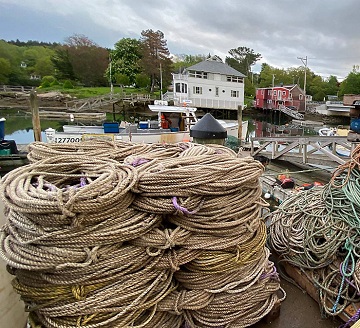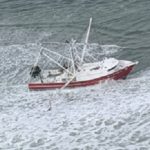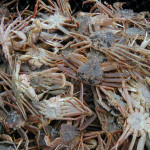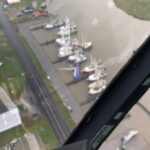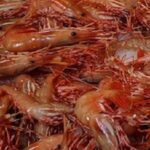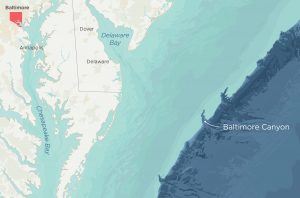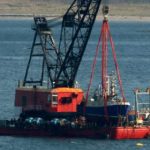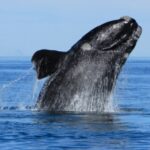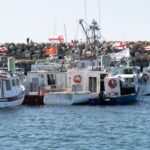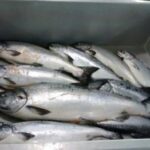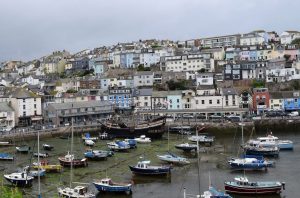Tag Archives: Ropeless gear
A treasured industry and an endangered species compete for survival
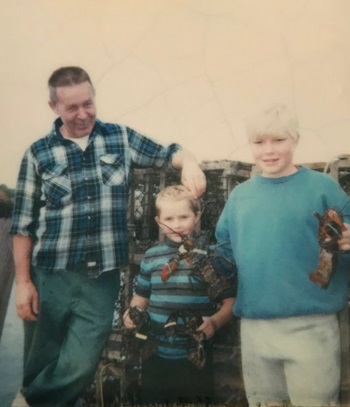 On a cold morning in January, Chris Welch is already out preparing his boat. This time of year, his days begin before sunrise. It’s a ritual he’s grown accustomed to — at just 35 years old, he’s already spent decades working in the lobster business. “I started lobstering when I was six.” Welch said. Being a lobsterman in Maine is less of a job and more of a lifestyle. It’s a family business for many, including Welch, whose learned the ropes from his grandfather. But recently, the focus is less on what lobstermen’s ropes are pulling up and more on what may be running into them. Video, more, >>click to read<< 10:23
On a cold morning in January, Chris Welch is already out preparing his boat. This time of year, his days begin before sunrise. It’s a ritual he’s grown accustomed to — at just 35 years old, he’s already spent decades working in the lobster business. “I started lobstering when I was six.” Welch said. Being a lobsterman in Maine is less of a job and more of a lifestyle. It’s a family business for many, including Welch, whose learned the ropes from his grandfather. But recently, the focus is less on what lobstermen’s ropes are pulling up and more on what may be running into them. Video, more, >>click to read<< 10:23
Wide-ranging meeting covers gauge changes, ropeless gear, damage repair – DMR to lobstermen: We need your data
 The Maine Department of Marine Fisheries held its January 29 Lobster Zone C Council meeting in Stonington Town Hall, drawing more than four dozen fishermen, marine scientists and local politicians eager to weigh in on a number of policy initiatives. Among the topics: the timeline for changes to gauge and vent sizes that were triggered due to declining juvenile lobster abundance; challenges to Canadian management practices; and plans to spend $17 million allocated last year by Congress to develop better science around lobstering’s impact on North Atlantic right whale mortality. Keliher kicked off the meeting with a discussion of impending gauge-size changes under Addendum XXVII, a management strategy adopt by the Atlantic States Marine Fisheries Commission (ASMFC) to increase protection of the Gulf of Maine/Georges Bank spawning stock. more, >>click to read<< 07:57
The Maine Department of Marine Fisheries held its January 29 Lobster Zone C Council meeting in Stonington Town Hall, drawing more than four dozen fishermen, marine scientists and local politicians eager to weigh in on a number of policy initiatives. Among the topics: the timeline for changes to gauge and vent sizes that were triggered due to declining juvenile lobster abundance; challenges to Canadian management practices; and plans to spend $17 million allocated last year by Congress to develop better science around lobstering’s impact on North Atlantic right whale mortality. Keliher kicked off the meeting with a discussion of impending gauge-size changes under Addendum XXVII, a management strategy adopt by the Atlantic States Marine Fisheries Commission (ASMFC) to increase protection of the Gulf of Maine/Georges Bank spawning stock. more, >>click to read<< 07:57

New England lobster, crab boats could begin using experimental ropeless gear with federal permits
Henry Milliken supervises a prototyping program for the so-called “ropeless” gear at the Northeast Marine Fisheries Science Center in Woods Hole. “Our goal is to work with the fishermen, get them experienced with the gear outside of the closed areas, outside of the times when the right whales are present, and then when everyone is experienced, everyone is comfortable, then permit them to fish in the closed areas,” Milliken says. Most Maine fishermen dismiss the technology as unworkable in the state’s diverse fishing grounds. But a handful are quietly trying it out. >click to read< 19:36
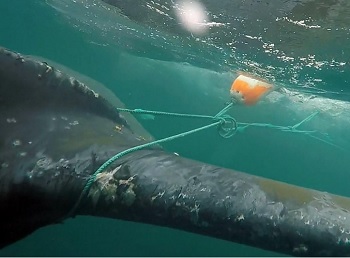
Whale entanglements, crab gear, and what can be done
Whale populations are recovering, and whales are on the move early this year. That’s led to five humpback whale entanglements in crab gear, prompting the California Department of Fish and Wildlife to close the commercial Dungeness crab season two months early. With a population that is “definitely recovering” and five entanglements over a month and a half, Bartling conceded, “We’re in uncharted territory.” Three of the entanglements were confirmed with commercial California Dungeness crab gear, while the other two were “not identifiable, but the gear is consistent with what could be commercial Dungeness crab gear.” >click to read< 10:15
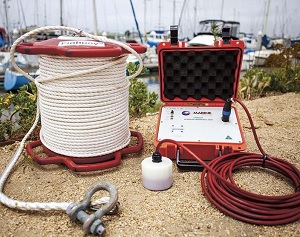
Ropeless gear is not the silver bullet – New technology promises to save the whales by reducing the need for crab fishing lines.
“We are working with fishermen to see what works and what doesn’t and what allows the fisherman to survive economically,” says Geoff Shester, a Monterey-based scientist with nonprofit Ocean. In June, the Ocean Protection Council awarded $500,000 for the testing of pop-up gear in the coming fishing season. The money will pay for five prototypes, including designs by Marina-based Desert Star Systems and Watsonville-based McFarlane Marine Services. The money will also go to fishermen participating in the research. A new crab industry group, California Coast Crab Association, is pushing back. Its president, Ben Platt, described the RAMP regulations as “an existential threat to our livelihoods”,,, >click to read< 08:39

Further protection measures coming to protect North Atlantic right whales
Federal Fisheries Minister Bernadette Jordan says Ottawa will announce further measures in the coming weeks to protect the endangered North Atlantic right whale. Speaking to a fishing gear innovation summit in Halifax today, Jordan didn’t release any details of the coming measures.,, The minister says testing also continues on new technology such as ropeless gear, which could help reduce the risk of entanglements for whales. More than 250 harvesters and fishing gear manufacturers from Canada, the United States, Iceland and Norway are attending the two-day summit. >click to read< 12:50
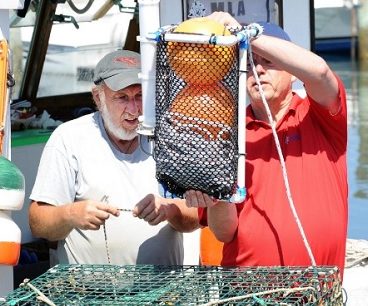
Maine Lobstermen Skeptical Of Proposal To Tie ‘Whale-Safe’ Seafood Label To Use Of New Fishing Gear. They should be.
A movement is emerging among conservation groups to create a “whale-safe” seal of approval for lobster caught with new types of gear designed to protect endangered North Atlantic right whales. But it could be a tough sell in Maine, where some say the iconic fishery is already sustainable.,, “That’s really important, that fishermen willing to test this gear, and certainly those fishermen fishing with ropeless gear should be rewarded,” says Erica Fuller, a lawyer at the Conservation Law Foundation, one of several organizations suing the federal government for stronger protections of the roughly 400 North Atlantic right whales remaining on the planet. >click to read< 10:36
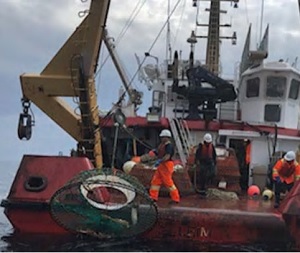
101 lost snow crab traps, 9 km of rope removed from gulf to protect right whales
Federal fishery officers and Canadian Coast Guard crews have removed 101 lost snow crab traps and more than nine kilometres of associated rope from the Gulf of St. Lawrence as part of ongoing efforts to protect endangered North Atlantic right whales. The so-called ghost gear,,, Ropeless gear holds hope, Earlier this week, during a stop in Dieppe to discuss whale protection efforts, Jonathan Wilkinson,,, “But certainly from a fisheries perspective we see that as a very, very interesting way to address and separate the issues of fishing versus the whales.” >click to read< 21:36
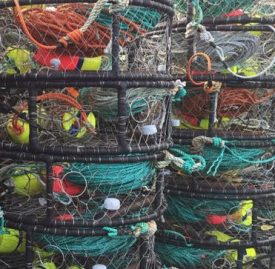
To Save the Whales, Crab Fishers Are Testing Ropeless Gear
Commercial crab fisher Dick Ogg, of Bodega Bay, California, knows his industry and its several hundred fishers must adapt. “We have to change. This is all about protecting our environment, the creatures that live in it, and our industry,” Ogg says. Last year, Ogg voluntarily tested two prototypes that deploy crab pots without leaving ropes in the water. One, made by Desert Star Systems, is designed so a fisher can send an acoustic signal that triggers the pot to open a mesh bag, releasing a buoy and coiled rope that float to the surface. In his test, the retrieval gear never appeared and Ogg lost his pot. >click to read<08:34

Changes can be made right now to save right whales, says fisherman
Fishermen in Nova Scotia’s snow crab industry say they are already making some immediate changes to prevent more deaths of North Atlantic right whales. Gordon MacDonald, managing director of the Snow Crab Fishermen’s Association off of southeastern Cape Breton, said he and other fishermen are already looking at ways to reduce the amount of slack rope attached to traps during the April-to-August snow crab season. “It’s easy, it’s quick and we can get on it right away and see how that goes and then get into other things.” He said the industry doesn’t need to wait for more study and changes to government regulations. “We can’t wait for that development to start doing things that have a positive impact,” he said. click here to read the story 09:53






